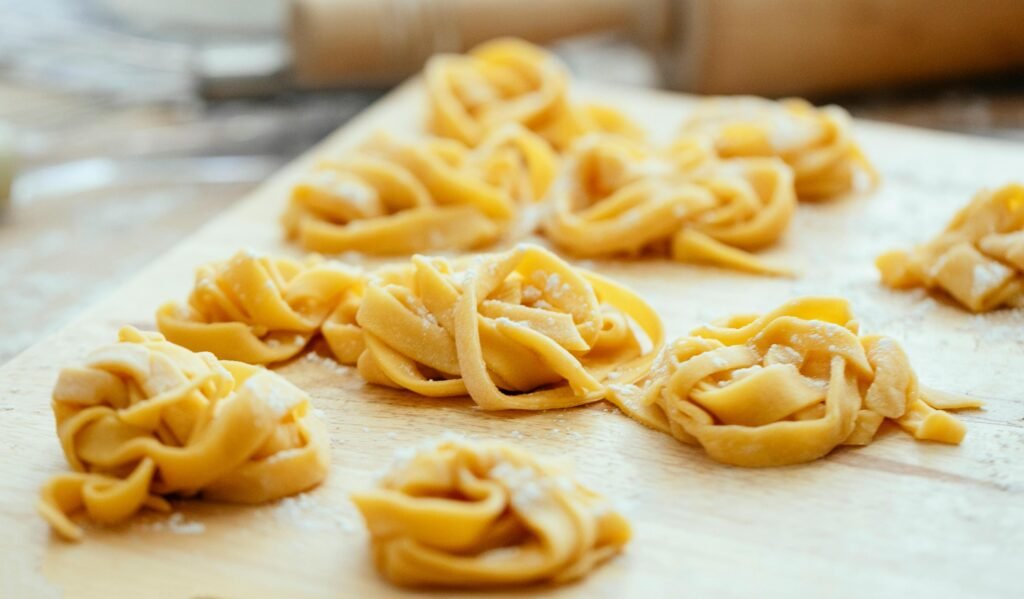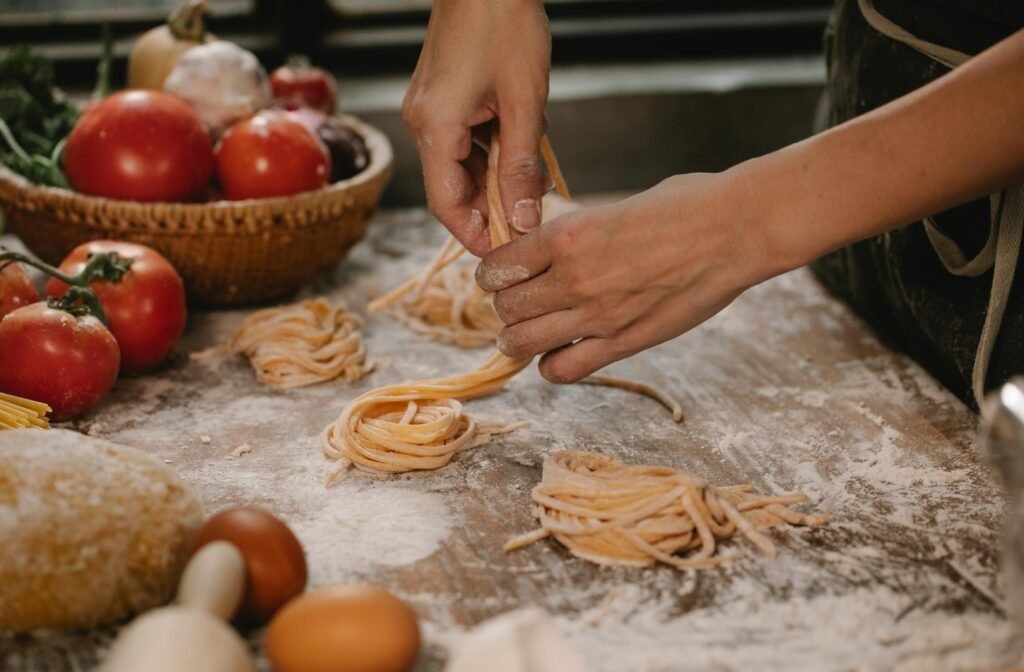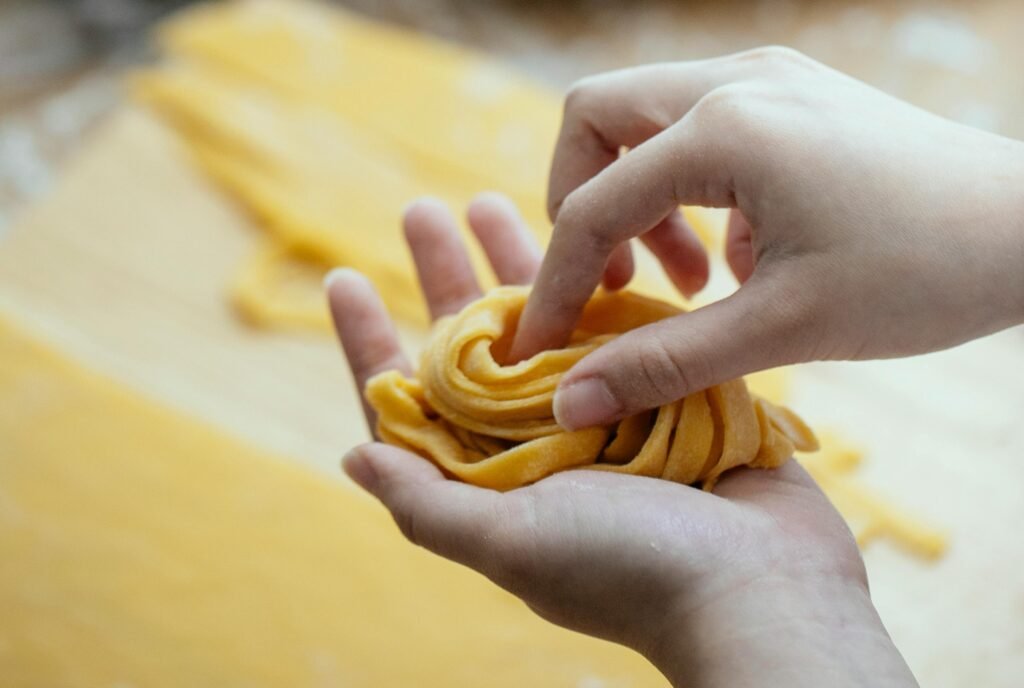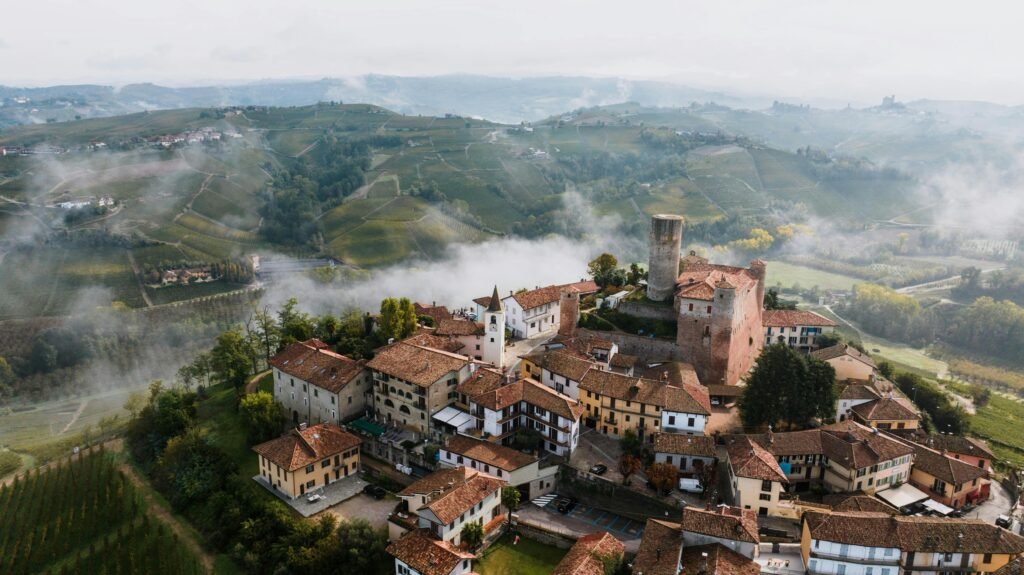In Bologna, cutting tagliatelle the wrong way isn’t just a minor mistake — it’s a culinary crime. This seemingly simple act disrespects centuries of tradition, turning a celebrated dish into a misunderstood meal.
Bologna isn’t just another pretty Italian city – it’s the undisputed gastronomic capital of Italy, where every meal is a masterclass in culinary tradition.
Here in the heart of Emilia-Romagna, pasta isn’t just food; it’s heritage served on a plate.
The locals don’t just cook pasta – they guard its traditions like sacred texts, passed down through generations of nonnas who’d rather die than see their beloved tagliatelle disrespected.
When you mess with pasta in Bologna, you’re not just making a dining faux pas. You’re challenging centuries of cultural identity that runs deeper than the medieval foundations beneath your feet.
What Is Tagliatelle?

Let me paint you a picture of what real tagliatelle looks like, because chances are, you’ve never actually seen the authentic version unless you’ve been to Emilia-Romagna.
Tagliatelle is a ribbon pasta that’s absolutely nothing like the thick, heavy stuff you find in most American Italian restaurants.
When I first saw sfoglina Maria rolling out fresh tagliatelle at Mercato di Mezzo, I was mesmerized by how paper-thin she made the dough.
This pasta is all about delicate texture – silky, tender ribbons that are just substantial enough to hold sauce without being chewy or dense.
The traditional recipe calls for just two ingredients: tipo 00 flour and fresh eggs.
That’s it! No water, no oil, no fancy additions.
The magic happens in the hands of the pasta maker, who rolls the dough so thin you can practically read through it, then cuts it into perfect ribbons with a technique that takes years to master.
Now, you might think tagliatelle looks similar to fettuccine, and you wouldn’t be completely wrong.
While fettuccine is typically about 10mm wide, traditional Bolognese tagliatelle measures exactly 8mm when raw.
This isn’t arbitrary; this specific width was chosen because it creates the perfect sauce-to-pasta ratio when paired with ragù alla bolognese.
The Sacred Rules of Cutting Tagliatelle
Here’s something that’ll probably surprise you – there’s literally an official gold standard for tagliatelle stored in Bologna’s Chamber of Commerce. I’m not kidding!
Back in 1972, the Bolognese Delegation of the Accademia Italiana della Cucina decided that tagliatelle variations had gotten out of hand.
So they created a golden replica of the “perfect” tagliatelle strand and deposited it with the Chamber of Commerce as the official reference.
This golden standard measures exactly 8 millimeters wide when uncooked and 7 millimeters when properly cooked.
Making and Cutting Technique

The cutting technique itself is an art form that takes years to perfect. I watched Nonna Giulia, a 78-year-old sfoglina, demonstrate the proper method at her family’s osteria.
First, she rolls the pasta dough into an impossibly thin sheet using a traditional mattarello (rolling pin) that’s been in her family for four generations.
The dough gets rolled to exactly 0.6 millimeters thick – any thicker and it won’t cook properly, any thinner and it’ll fall apart.
Then comes the cutting magic.
Giulia dusts the pasta sheet with semolina flour, rolls it loosely into a flat cylinder, and uses a razor-sharp knife to cut perfect ribbons in one fluid motion.
Each cut must be decisive and clean – any sawing or hesitation creates jagged edges that won’t cook evenly.
Why You Shouldn’t Cut It on Your Plate
Cutting tagliatelle on your plate isn’t just bad etiquette – it’s cultural vandalism.
Think about it this way: someone spent hours, maybe days, perfecting that pasta.
They carefully rolled the dough to exact specifications, cut each strand with precision, and cooked it to the perfect texture.
Then you come along and hack it to pieces with a butter knife like you’re preparing food for a toddler.
During my three months living with the Rossi family in Bologna, I learned that pasta eating technique is deeply connected to respect and appreciation.
“When you cut the pasta,” Papa Rossi explained to me one evening, “you destroy what the cook created. It’s like… how do you say… breaking a painting into pieces.”
The mechanical reason is just as important as the cultural one.
Tagliatelle is specifically designed to be twirled on a fork, and the length is crucial for this technique. When you cut it short, you lose the ability to create those perfect little nests that hold sauce so beautifully.
Instead, you end up with stubby pieces that slide around your plate and fall off your fork.
Tagliatelle al Ragù: The Dish of Bologna
Let me clear up one of the biggest misconceptions in Italian-American cuisine – there’s no such thing as “spaghetti bolognese” in Bologna. Seriously!
The first time I ordered spaghetti with meat sauce in Bologna, thinking I was being smart by using the “proper” Italian name, the server actually laughed. Not meanly, but with genuine amusement. “Spaghetti bolognese?” he repeated, shaking his head. “No, no, no. Tagliatelle al ragù. This is what you want.”
Here’s why this distinction matters so much: ragù alla bolognese was specifically developed to pair with tagliatelle, not spaghetti. The sauce is thick, rich, and chunky, with tiny pieces of beef, pork, and vegetables that need something substantial to cling to. Spaghetti is too smooth and narrow – the sauce just slides right off.
I learned this firsthand during a cooking class with Chef Marco at Osteria del Sole. He showed me how authentic ragù contains barely any tomato (just a tiny bit of tomato paste for color), lots of milk or cream, and wine that’s been cooked down until the alcohol completely evaporates. The consistency is more like a thick, meaty cream sauce than the tomato-heavy “bolognese” most Americans know.
The cooking technique for the pasta itself is just as important as the sauce. Authentic tagliatelle gets cooked in heavily salted water for just 2-3 minutes if fresh, or until it’s perfectly al dente. Then it gets tossed directly with the ragù in the pan, allowing the pasta to absorb some of the sauce flavors while finishing the cooking process.
Pasta and Pride: What It Says About Italian Culture
Every Sunday at the Rossi family dinner table, I watched three generations come together over the same dishes their ancestors had been making for centuries.
Nonna Teresa, at 89 years old, still insisted on making the tagliatelle by hand every week, even though her arthritis made it painful.
When I asked why she didn’t just buy fresh pasta from the excellent shop down the street, she looked at me like I’d suggested abandoning a family member.
“This is who we are,” she told me in her mix of Italian and broken English. “When I make pasta like my nonna taught me, she is here with us. When you eat it the right way, you understand our family.”
That’s when it clicked for me.
Italian food rules aren’t arbitrary or pretentious – they’re cultural preservation in action.
Every technique, every tradition, every “right way” of doing things carries the weight of generations who fought to maintain their identity through wars, invasions, and centuries of change.
And if you’re wondering whether Bologna is worth visiting beyond its food, here’s why this underrated Italian gem absolutely deserves a spot on your itinerary.
Tips for Eating Like a Local in Bologna
When you sit down at a traditional osteria or trattoria, take a moment to observe the atmosphere before doing anything.
Bologna’s restaurant culture is surprisingly formal compared to casual American dining, even in family-run places.
Conversations tend to be quieter, meals proceed at a leisurely pace, and there’s an unspoken respect for the food and the people preparing it.
Ordering tagliatelle requires a bit of local knowledge.
Don’t just ask for “pasta with meat sauce” – that screams tourist and might get you something that’s not authentic.
Instead, confidently order “tagliatelle al ragù” and wait for the approving nod from your server.
If you want to really impress, specify that you want it “fatto in casa” (made in house), though most good places will assume this anyway.
Lunch service typically runs from 12:30 to 2:30 PM, and dinner doesn’t start until 7:30 or 8:00 PM. Showing up at 6:00 PM expecting dinner will mark you as an outsider immediately.
Beyond tagliatelle al ragù, Bologna offers other traditional dishes that reflect the same attention to culinary heritage.
Tortellini en brodo showcases the region’s pasta-making skills in a different form, while cotoletta alla bolognese demonstrates their approach to meat preparation.
Each dish has its own set of traditions and proper eating techniques.
Most importantly, approach every meal as a learning opportunity rather than just fuel for sightseeing.
Ask questions, show genuine interest in the food’s history, and don’t be afraid to admit when you don’t know something. Bolognese people are incredibly generous with their knowledge when they see authentic curiosity rather than demanding tourist behavior.



